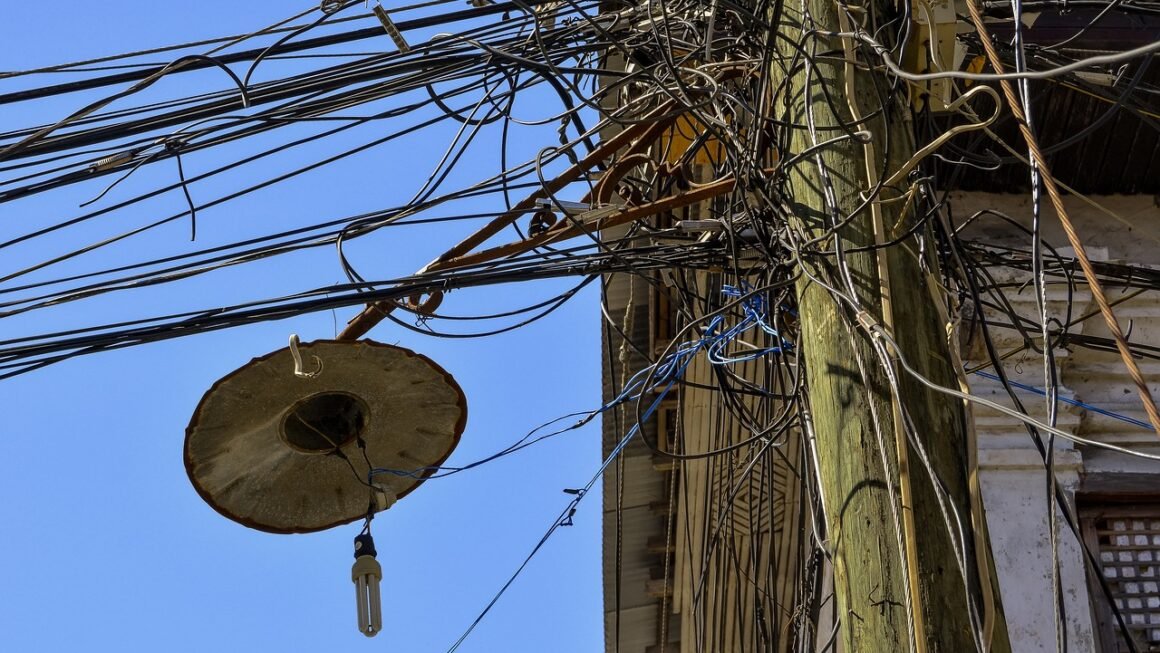Connecting to the internet has become as essential as breathing for many of us. Whether you’re checking emails, streaming videos, or navigating unfamiliar territory, a reliable internet connection is crucial. That’s where WiFi hotspots come in – readily available access points that can keep you connected on the go. This comprehensive guide will delve into the world of WiFi hotspots, exploring their benefits, security considerations, and how to find and use them safely and effectively.
What are WiFi Hotspots?
Definition and Types
A WiFi hotspot is a physical location that offers internet access over a wireless local area network (WLAN) through a router connected to an internet service provider. Think of it as a public or semi-public access point allowing devices like laptops, smartphones, and tablets to connect to the internet without needing a direct wired connection.
There are several types of WiFi hotspots:
- Public Hotspots: Typically found in cafes, libraries, airports, hotels, and other public spaces. These are often free but may require agreeing to terms and conditions before use.
- Private Hotspots: Offered by businesses or individuals, often requiring a password or payment. These might include hotspots in your office or provided by your internet service provider (ISP).
- Mobile Hotspots: Created by a smartphone or dedicated device sharing its cellular data connection via WiFi. These offer convenience but can quickly deplete data allowances.
- Subscription-based Hotspots: Offered by companies like Boingo or iPass, providing access to a network of hotspots for a fee.
Benefits of Using WiFi Hotspots
Using WiFi hotspots provides several advantages, especially when you are on the move.
- Convenience: Connect to the internet from almost anywhere with a WiFi signal.
- Cost Savings: Avoid using your mobile data, potentially saving money on data charges, especially when traveling internationally. Did you know that using cellular data while roaming can cost several dollars per megabyte, while a WiFi hotspot might be free or significantly cheaper?
- Accessibility: Perfect for travelers or those who need temporary internet access without a long-term commitment.
- Increased Productivity: Allows you to stay connected and productive even when away from your home or office. Imagine being able to answer important emails while waiting for your flight.
- Connectivity in Remote Areas: While not always the case, some rural areas may have WiFi hotspots available where cellular coverage is limited.
Finding WiFi Hotspots
Using WiFi Finder Apps
Several apps can help you locate nearby WiFi hotspots. These apps often use crowdsourced data and GPS to provide accurate locations and details such as passwords and user reviews. Some popular WiFi finder apps include:
- WiFi Map: A community-driven app with a massive database of WiFi hotspots and passwords.
- Instabridge: Another popular app offering WiFi passwords shared by users worldwide.
- Avast WiFi Finder: Provides secure and verified WiFi hotspots.
These apps are beneficial because they can often provide information about the hotspot’s reliability and security based on user feedback.
Built-in Device Features
Most smartphones and laptops have built-in features to scan for available WiFi networks. Here’s how to use them:
- Smartphones (iOS & Android): Go to your device’s Settings > WiFi to view available networks. Your phone may also suggest nearby open WiFi networks.
- Laptops (Windows & macOS): Click the WiFi icon in the system tray (Windows) or menu bar (macOS) to see a list of available networks.
Public WiFi Directories
Websites and online directories also list public WiFi hotspots. Some reliable sources include:
- Open WiFi Map: A community-driven map showing the location of free WiFi networks.
- JiWire: A directory of WiFi hotspots worldwide (although not as actively maintained as some others).
- ISP Websites: Some ISPs provide maps of their own hotspots available to their customers. For example, Xfinity offers a WiFi hotspot locator for its internet subscribers.
Securing Your Connection on Public WiFi
Understanding the Risks
Public WiFi hotspots are convenient, but they also pose security risks. Cybercriminals can exploit unsecured networks to intercept your data, steal your login credentials, or even install malware on your device.
Here are some common risks:
- Man-in-the-Middle Attacks: Attackers can intercept data transmitted between your device and the website you’re visiting.
- Unencrypted Networks: Data sent over unencrypted (HTTP) websites can be easily intercepted.
- Fake Hotspots: Criminals set up fake hotspots with legitimate-sounding names to lure unsuspecting users.
Practical Security Measures
To protect yourself when using public WiFi, consider these steps:
- Use a Virtual Private Network (VPN): A VPN encrypts your internet traffic, making it difficult for hackers to intercept your data. Consider using reputable VPN services like NordVPN, ExpressVPN, or Surfshark.
- Enable HTTPS: Always use websites that support HTTPS (indicated by a padlock icon in the address bar). Most modern websites default to HTTPS, but double-check to be sure.
- Turn off File Sharing: Disable file sharing and network discovery on your device when using public WiFi. On Windows, set your network profile to “Public” to automatically disable these features. On macOS, disable “Sharing” in System Preferences.
- Enable Your Firewall: Make sure your device’s firewall is turned on.
- Use Strong Passwords: Use strong, unique passwords for all your online accounts and enable two-factor authentication (2FA) whenever possible.
- Avoid Sensitive Transactions: Refrain from conducting sensitive transactions, such as online banking or shopping, on public WiFi networks if possible. If you must, use a VPN and ensure the website uses HTTPS.
- Keep Your Software Updated: Regularly update your operating system, browser, and antivirus software to patch security vulnerabilities.
Identifying Fake Hotspots
Be cautious of WiFi networks with generic or suspicious names. Verify the network name with the establishment offering the WiFi (e.g., ask the cafe staff). Avoid connecting to hotspots without passwords, as they are often unsecured and potentially malicious.
Creating Your Own Mobile Hotspot
Turning Your Smartphone into a Hotspot
Most smartphones allow you to create a mobile hotspot, sharing your cellular data connection with other devices. Here’s how:
- Android: Go to Settings > Network & internet > Hotspot & tethering > Wi-Fi hotspot. Configure the hotspot name, password, and security settings.
- iOS: Go to Settings > Personal Hotspot. Turn on Personal Hotspot and set a WiFi password.
Considerations for Mobile Hotspots
While convenient, using your smartphone as a hotspot has some drawbacks:
- Data Usage: Mobile hotspots use your cellular data, which can quickly deplete your data allowance.
- Battery Drain: Running a hotspot significantly drains your phone’s battery.
- Speed: The speed of your hotspot depends on your cellular connection, which can be slower than a dedicated WiFi network.
- Security: Ensure you set a strong password for your mobile hotspot to prevent unauthorized access. WPA2 or WPA3 security is recommended.
Dedicated Mobile Hotspot Devices
For heavier use, consider a dedicated mobile hotspot device (also known as a MiFi device). These devices are designed solely for providing WiFi connectivity and often offer better battery life and performance than smartphones. They also typically support more simultaneous connections.
Examples include devices from Netgear (Nighthawk series) and TP-Link.
Future of WiFi Hotspots
Evolving Technology
WiFi technology continues to evolve, with newer standards like WiFi 6 and WiFi 6E offering faster speeds, improved capacity, and enhanced security. These advancements are improving the overall experience of using WiFi hotspots. As more locations adopt these newer standards, users can expect faster and more reliable connections.
Integration with 5G
The integration of WiFi hotspots with 5G networks is also on the rise. 5G offers significantly faster speeds and lower latency than previous generations of cellular technology, making it an ideal backhaul for WiFi hotspots. This combination can provide users with incredibly fast and reliable internet access, even in areas with limited wired infrastructure.
Smart City Initiatives
Many cities are implementing smart city initiatives that include deploying free public WiFi hotspots to improve connectivity and accessibility for residents and visitors. These initiatives often involve partnerships between city governments, internet service providers, and technology companies.
Conclusion
WiFi hotspots are an invaluable resource for staying connected in today’s mobile world. By understanding the different types of hotspots, knowing how to find them, and taking necessary security precautions, you can leverage the convenience of WiFi hotspots while minimizing the risks. Whether you’re relying on free public WiFi or creating your own mobile hotspot, remember to prioritize security and be mindful of your data usage. As technology continues to advance, WiFi hotspots will undoubtedly play an increasingly important role in keeping us connected, informed, and productive.




